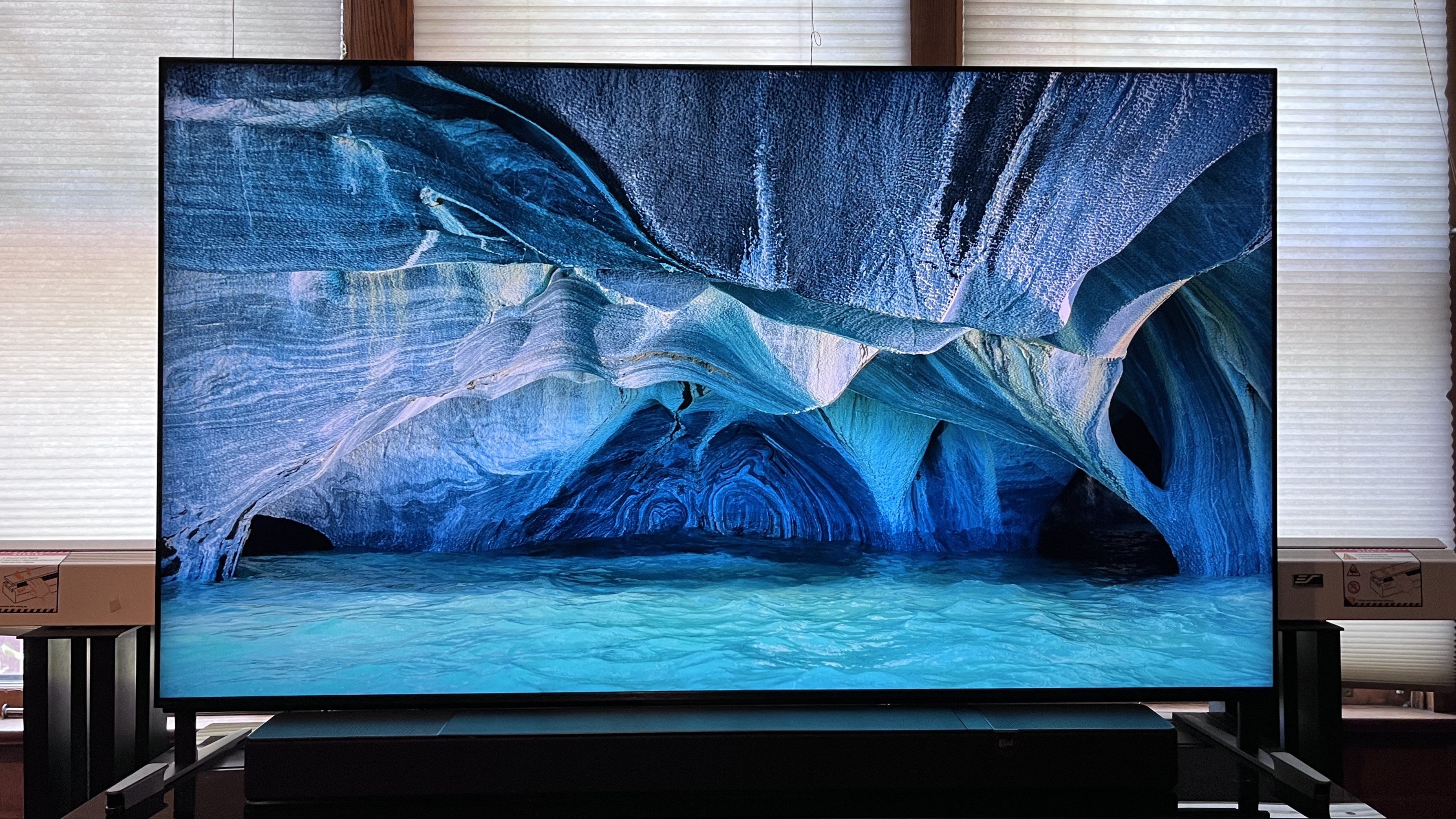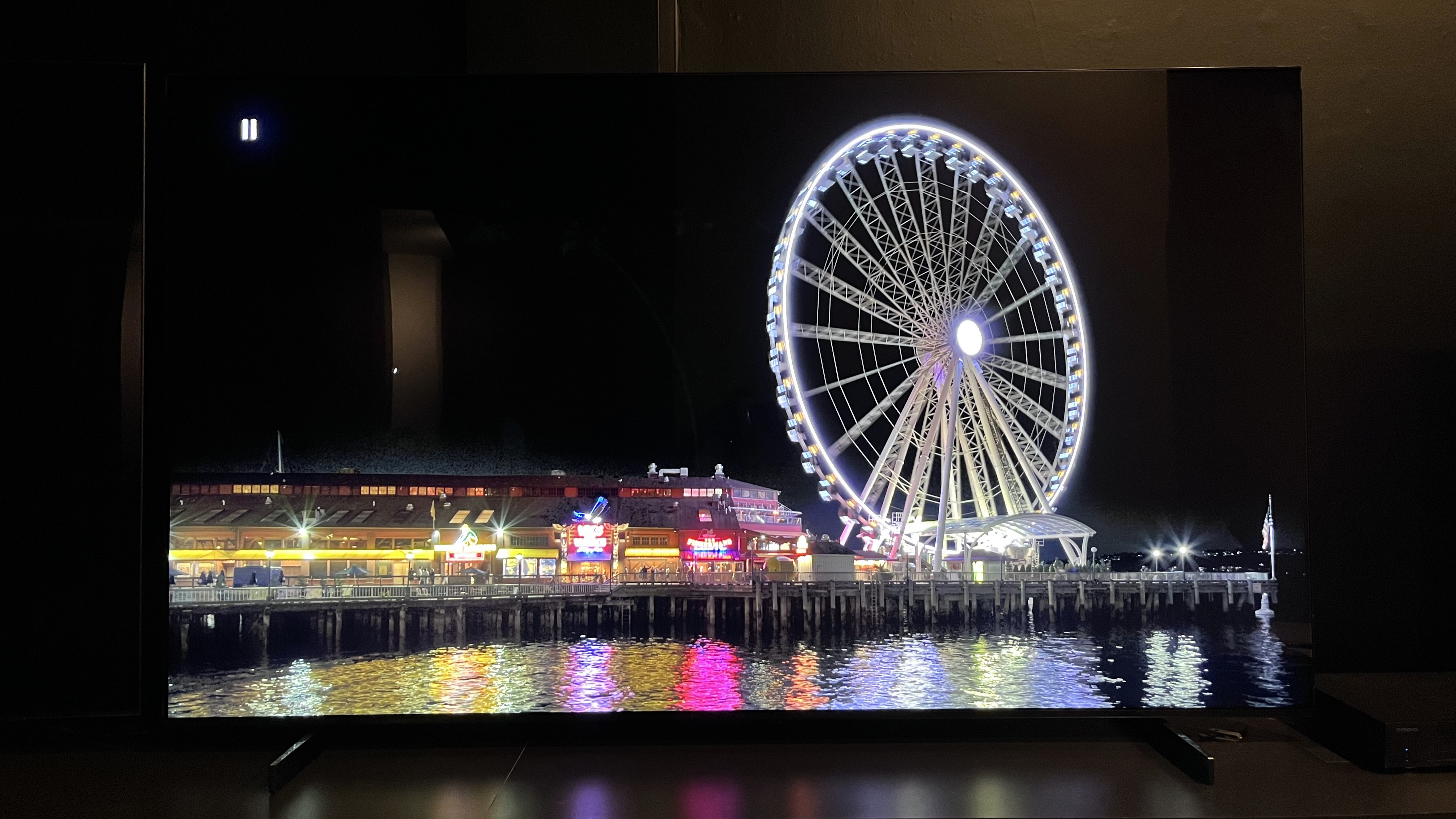
The best TVs, from mini-LED to OLED models, are notably brighter in 2024 than in past years. Part of that is a flat-out specs race, with brands seeking to gain attention for their TVs' light output prowess. Another part is a real need for TVs to adapt to the expanding needs of high dynamic range formats and accommodate viewing in bright environments where screen glare caused by an undraped window or overhead lights can reduce picture quality.
Sony’s Bravia 9 is the brightest model in its 2024 lineup, and the company’s backstory for the new TV is that it was designed in response to its new BVM-HX3110 professional monitor, which gives creators the ability to master movies and TV shows in 4K/HDR with highlights up to 4,000 nits. That’s a big brightness boost over Sony’s previous pro monitor, which maxed out at 1,000 nits. It’s going to take years for programs mastered with such a high peak brightness level to become standard in Hollywood, but Sony says it wants to give viewers a premium TV option now that is primed for the future.
In our Sony Bravia 9 review, it had a measured peak brightness of nearly 2,300 nits in Standard picture mode, which is higher than any TV TechRadar has tested so far. Well, almost – in a hands-on test of the TCL QM851G mini-LED TV we conducted back in May, that company’s new flagship model had a measured peak brightness twice as high as the Bravia 9. However, the result was achieved in the Vivid picture mode, which was the only mode finalized at the time.
I’m currently working on a full review of the TCL QM851G and have been able to compare it with the Sony Bravia 9. As part of that process, I’ve watched similar reference movie clips and TV shows on each TV. Both were set to their respective Movie picture mode – and Dolby Vision Bright mode for content with Dolby Vision HDR – to better level the playing field during the evaluation. Switching to Movie mode dramatically lowered the peak brightness for each TV: the Bravia 9 now measured 1,871 nits, and the QM851G measured 3,035 nits.
One qualification I need to mention is that the TCL’s measurements were made after I tweaked its Brightness and Black Level picture settings as both were too low in the default Movie mode, which applies an “Eco” adjustment. Before making those tweaks, the TCL’s peak brightness measured 2,859 nits, still an above-average level for a mini-LED TV.

The benefits – and limits – of brightness
I started out my viewing with overhead lights on, and both TVs still looked incredibly bright. This was particularly apparent with sports such as a New York Yankees vs Baltimore Orioles game I streamed on Amazon Prime Video. The whites of the Yankee players’ uniforms seemed to pop from the screen, and the green turf and orange and red colors of the signage also looked vivid and bright – and this was in Movie picture mode with its comparatively muted picture,
The main reason why both TVs looked so good is that they both have excellent full-screen brightness: I measured around 500 nits on the Sony and 801 nits on the TCL, respectively, in Movie mode. For programs like sports, where the image is evenly illuminated by the stadium lights, having a high brightness level across the entire screen makes a powerful difference. And while the TCL had the higher measured brightness here, I wasn’t left wanting with either TV – both looked sufficiently punchy, even with overhead room lights on.
What was arguably the more important factor during my evaluation was the lack of screen glare on either TV. Both the Sony and TCL feature an anti-reflection screen that effectively reduces glare from in-room light sources. Screen glare will always be less of an issue with bright content like sports, but it can seriously reduce picture quality on darker programs with deep blacks and shadows – House of the Dragon on Max, for instance.
With my room’s overhead lights turned on, I watched a scene from House of the Dragon season two, episode one, where Alicent Hightower speaks with her father, the king’s hand, and another where Mysaria is interrogated by Daemon Targaryen in a dungeon. The shadowy backgrounds in both scenes looked deep and detailed, with no on-screen glare reducing the picture contrast or clarity on either TV.
When I switched the lights off and watched in a dim setting, the candles in Alicent’s chamber looked powerfully bright on both TVs, and their respective local dimming capabilities ensured no light bleed into the near-black background.

I’ll have plenty more to say about the TCL QM851G mini-LED TV when the full review posts, but as you can probably tell, my initial take is favorable. It surpasses the Sony Bravia 9 as the brightest TV we’ve ever tested, even when the QM851G in its Movie picture mode, not the Vivid one we were limited to measuring during our May hands-on test.
But one thing that became clear during my Sony vs TCL comparison is that extremely high brightness isn’t everything when it comes to picture quality. Sony's Bravia 9, with its comparatively lower measured brightness, had a similarly impactful picture with sports and darker 4K/HDR content like movies and House of the Dragon.
The takeaway for TV shoppers? Other aspects like an anti-reflection screen and local dimming performance carry equal weight to brightness and should be carefully considered when choosing a TV.







